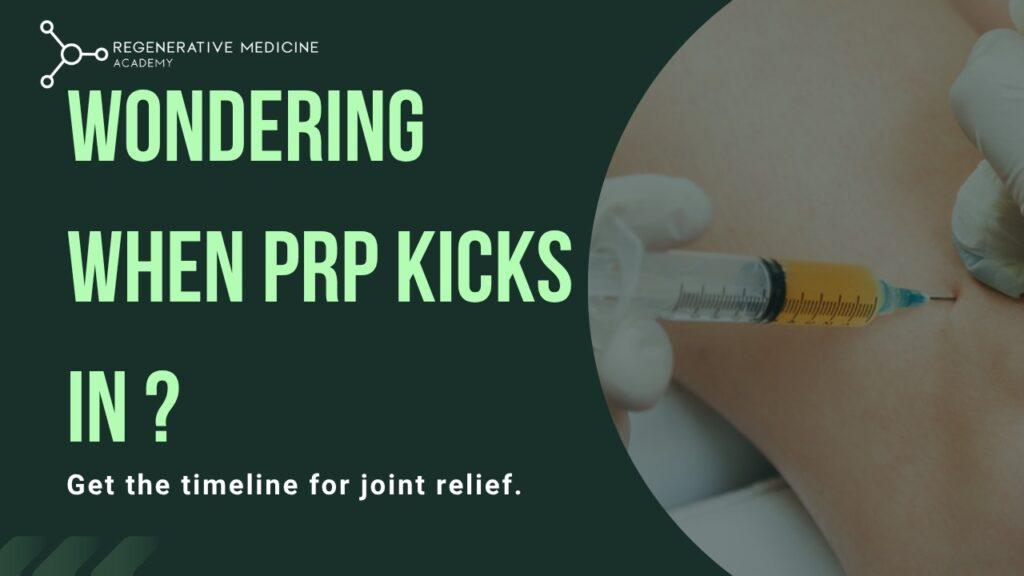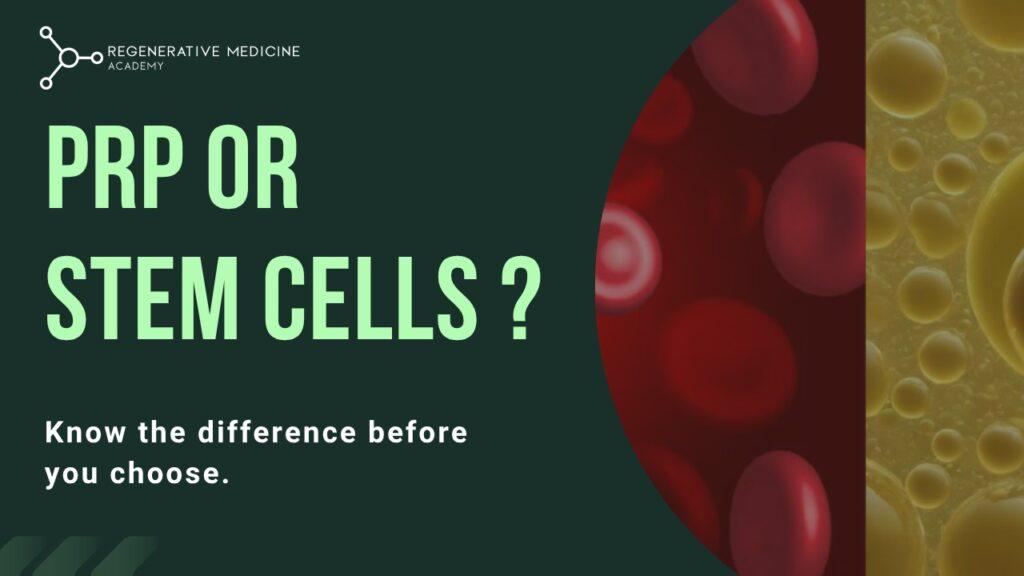Patients Want Relief—Fast. Are You Ready to Set Expectations?
Joint pain is one of the top reasons patients visit sports and orthopedic clinics. With cortisone shots falling out of favor and surgery often being a last resort, many are now turning to regenerative options like platelet-rich plasma (PRP). But the first question they ask is: how long does it take for PRP to work on joints?
As a clinician, managing this expectation is key to both treatment success and patient satisfaction. Let’s break down what the evidence shows, what influences outcomes, and how you can communicate with clarity and confidence.
Understanding the Basics: PRP for Joint Pain
PRP therapy involves extracting a small volume of a patient’s blood, spinning it in a centrifuge to isolate growth factor-rich plasma, and injecting it into the affected joint. The goal? Stimulate the body’s own healing process at the site of injury or degeneration.
Whether it’s the knee, shoulder, hip, or ankle, PRP is increasingly used as a non-surgical option for osteoarthritis, tendon damage, and soft-tissue inflammation. Clinical studies and real-world practice alike continue to affirm the growing role of prp for joint pain—but results vary.
So, How Long Does It Take for PRP to Work on Joints?
Short Answer: It Depends. But Here’s What We Know.
On average, patients begin noticing improvements anywhere from 2 to 6 weeks after treatment. However, the timeline can stretch out to 3 months or more for maximum benefit.
The Typical Healing Timeline:
- Week 1–2:
Initial soreness is common. This is due to the inflammatory response triggered by the injection, not worsening of the condition. - Week 3–4:
Patients often report a gradual decrease in pain and stiffness. Range of motion may begin to improve. - Week 6–12:
This is when most patients feel significant relief. Cartilage support, collagen synthesis, and inflammatory control all contribute to noticeable clinical improvement. - 3+ Months:
Continued progress is possible, especially in mild to moderate osteoarthritis cases. Some patients may experience benefits up to 6 months or longer post-treatment.
These ranges help answer how long does it take for PRP to work on joints, but there’s no one-size-fits-all answer.
Key Factors That Affect PRP Outcomes
Multiple patient-specific and procedural variables influence both the speed and extent of healing. Here’s what clinicians should keep in mind:
1. Severity of Joint Damage
- Mild to moderate osteoarthritis responds best.
- Advanced cases may require multiple rounds or adjunct therapies.
2. PRP Preparation Quality
- Leukocyte-rich vs. leukocyte-poor formulations
- Platelet concentration (ideally 4–6x baseline)
- Use of activators and centrifuge settings
Low-quality or inconsistent preparations of plasma shots for joints can reduce effectiveness or delay response time.
3. Injection Technique and Image Guidance
- Ultrasound or fluoroscopic guidance improves accuracy.
- Improper placement leads to diminished response and slower healing.
4. Patient Age and Activity Level
- Younger, more active patients tend to respond quicker.
- Elderly or sedentary individuals may see slower progress.
5. Post-Injection Protocols
- Avoiding NSAIDs
- Modified activity and structured rehab
- Compliance with follow-up appointments
Realistic vs. Optimistic: Patient Communication Tips
Setting expectations around how long does it take for PRP to work on joints is just as important as the injection itself. Disappointment often comes not from poor outcomes, but from poorly managed timelines.
Here’s How You Can Navigate the Conversation:
- Set a Realistic Window:
“You may begin to feel improvement within a few weeks, but it often takes up to 2–3 months to see the full effect.” - Emphasize Gradual Progress:
Explain that PRP works by healing tissue—not just masking symptoms. - Discuss Outcome Variability:
Share how age, joint condition, and lifestyle affect response. - Explain the Inflammatory Phase:
Make sure patients understand why some soreness is expected in the first week. - Support with Data:
Reference clinical trials that align with their diagnosis (e.g., knee OA vs. rotator cuff injury).
Clinical Evidence: What Research Shows
A 2019 randomized controlled trial published in The American Journal of Sports Medicine found that PRP injections improved pain and function in knee osteoarthritis patients more effectively than hyaluronic acid. Patients typically showed significant improvement by week 6, with sustained results through 6 months.
Link: https://pubmed.ncbi.nlm.nih.gov/32302218/
Another study in The Journal of Orthopaedic Research showed enhanced cartilage thickness in PRP-treated joints, suggesting structural regeneration—not just symptom relief—may be possible.
Link: https://pubmed.ncbi.nlm.nih.gov/36474791/
These findings support what most clinicians observe in practice: plasma shots for joints are not quick fixes but have real, measurable effects when used properly.
Should Patients Consider Repeat Injections?
In some cases, yes. Research suggests that repeat PRP injections spaced 4–6 weeks apart can prolong benefits, especially in osteoarthritis cases.
Typical clinical guidance:
- Mild OA: One injection may suffice
- Moderate OA: 2–3 sessions may be more effective
- Severe OA: Results may be limited; discuss expectations carefully or consider other options
The decision should be individualized based on response and follow-up imaging or scoring
From Theory to Practice: What New Clinicians Must Know
If you’re expanding your scope to include PRP therapy, mastering how long does it take for PRP to work on joints is just one piece of the puzzle. You also need:
- Technical proficiency in blood processing and centrifuge operation
- Training in image-guided musculoskeletal injections
- Informed consent protocols that address both outcomes and risks
- Patient education materials that reinforce timelines and activity restrictions
All of these elements are part of building trust and delivering consistent outcomes in your practice.
Final Thoughts: PRP Works—But Timing Matters
Patients may expect instant relief—but that’s rarely how PRP functions. Instead, it offers gradual, biologically driven healing that peaks over time. Communicating this upfront prevents false expectations and strengthens clinical relationships.
For the practicing orthopedic or sports physician, mastering the nuances of timing and response will not only enhance outcomes—it will position you as a reliable authority in regenerative care.
Ready to Deepen Your Skills in PRP Therapy?
Join hundreds of physicians learning to deliver regenerative treatments with precision and confidence at Regenerative Medicine Academy. Our PRP courses cover:
✅ Evidence-backed treatment timelines
✅ Hands-on injection technique labs
✅ Customized protocols for joint conditions
✅ Post-care frameworks that keep patients on track
👉 Explore upcoming PRP training courses and take your regenerative expertise to the next level.



